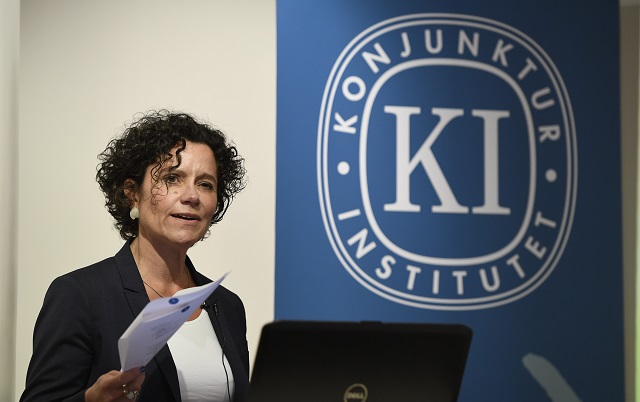The government's budget is severely under-financed and is not in line with the surplus target, according to the institute's latest forecast.
“If the public welfare commitment is also to be kept at 2018's level, the budget will need to be increased by around 30 billion kronor,” the Institute of Economic Research wrote in its forecast.
Asked if the institute was critical of the under-financing, Urban Hansson Brusewitz, general director of the institute, said: “Yes, it's our assessment that the budget is not in line with either the existing surplus target or the new surplus target. It is measured in terms of structural saving, which depends, among other things, on a non-accelerating inflation rate of unemployment, where we make different judgments compared with the government.”
According to KI, unemployment is expected to fall from 6.6 percent this year to 6.3 percent next year and 6.2 percent in 2019, before increasing slightly after that. At the same time, the report shows that there is currently a large shortage of labour with the skills which are in demand.
The situation in the labour market is described as “strained” with a significant problem in supply and demand.
“At the moment we have a boom and we say that unemployment won't fall below 6.2 perent. That's quite a high level of unemployment generally, and that shows that there's a problem of supply and demand. There are many people in the workforce for whom it's not easy to find work,” said Ylva Hedén Westerdahl, head of forecasting at KI.
When it comes to salaries, the increase is more moderate despite the shortage in the work market.
In general, the growth rate in the Swedish economy is expected to weaken slightly over the next few years. This year, the GDP is expected to grow by 2.8 percent, while next year a growth of 2.7 percent is expected. But the growth rates for 2019 and 2020 are estimated at 1.8 and 1.5 percent respectively.
There are some risks to be highlighted in the forecast. One is the economic-political uncertainty across Europe, as well as the risk of a hard landing (a rapid shift from growth to slow-growth to flat) in China and a fall in asset prices.
Falling house prices in Sweden are another factor which could have a negative effect. The extent to which this would affect the Swedish economy would depend on what triggered any decline. If house buyers start to feel worried about buying a home, the impact on the economy would likely be less than if falling prices were due to a global factor such as a financial crisis.
In general, the growth rate in the Swedish economy is expected to be slightly depleted in the coming years. This year, GDP is expected to grow by 2.8 percent, while the corresponding figure next year is expected to be 2.7. For 2019 and 2020, the assessment is 1.8 and 1.5 percent respectively.



 Please whitelist us to continue reading.
Please whitelist us to continue reading.